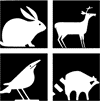Wildlife Damage Management, Internet Center for
Date of this Version
2009
Document Type
Article
Abstract
Invasive vertebrate species can cause substantial damage to natural resources, property, crops, livestock, and pose a disease hazard to humans, native wildlife and domestic animals. Numerous island species have become extinct or are threatened with extinction from invasive species. The high rate of invasive species introductions continues because of the large volumes of world trade and international travel. Humans are often responsible for introductions, but are also the key to their prevention, management, and eradication. However, many of the values and perceptions of invasive species vary among humans. Hence, the prevention and control of invasive vertebrates often requires adjusting human behaviors, values, and beliefs, along with changing the way decisions are made. Most people have little idea of which species are invasive, what their impacts are, and what control methods might be appropriate for their management. A wide variety of education, outreach, and training programs are needed to help motivate people to take action and raise awareness of the causes of establishment, consequences of invasive species, and the need for prevention, control, and eradication programs. Key messages should target diverse audiences through appropriate media outlets and methods. Surveys to better understand how different stakeholder groups view invasive species, the threats they pose, and the potential methods of control are also needed. We review several programs in place to help achieve the critical need for an informed and active public with regard to invasive vertebrate species. The programs help create an informed public, generate public and financial support for invasive species management, train the public to recognize and report sightings of invasives, and encourage sustainable ecosystems.



Comments
Published in Proceedings of the 13th WDM Conference (2009). (J. R. Boulanger, editor). 2009.